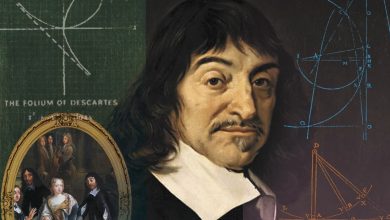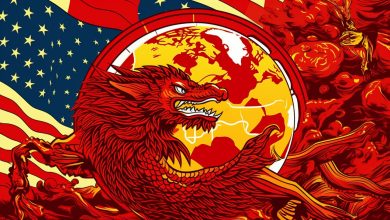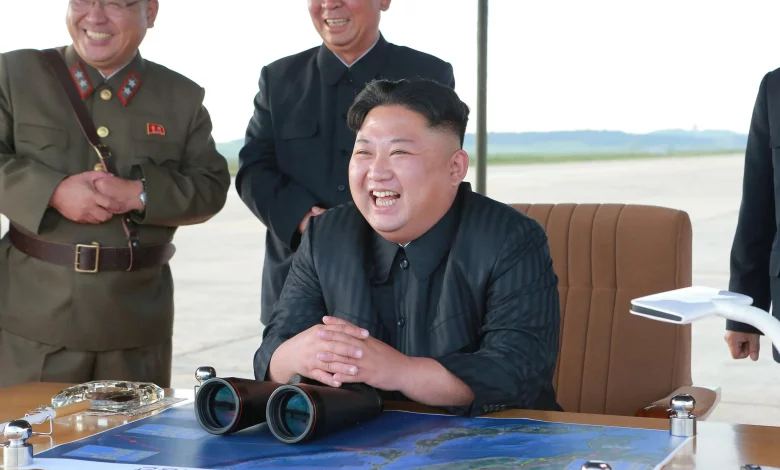
The rise of Kim Jong Un to become the supreme leader of North Korea is a fascinating journey filled with political intrigue and significant events that shaped his path to power. From his early life and education to his rapid rise within the Korean Workers’ Party, this detailed timeline provides an in-depth look at the key moments that led to Kim Jong Un’s declaration as supreme leader and subsequent efforts to consolidate his power.
Early Life and Education
Kim Jong Un was born on January 8, 1984, in North Korea. He comes from a renowned political family, with his father being Kim Jong Il and his sister, Kim Yo-Jong, playing significant roles in the regime. Kim Jong Un received his education at the International School of Berne in Switzerland before continuing his studies at Kim Il-Sung National War College in P’yŏngyang, North Korea.
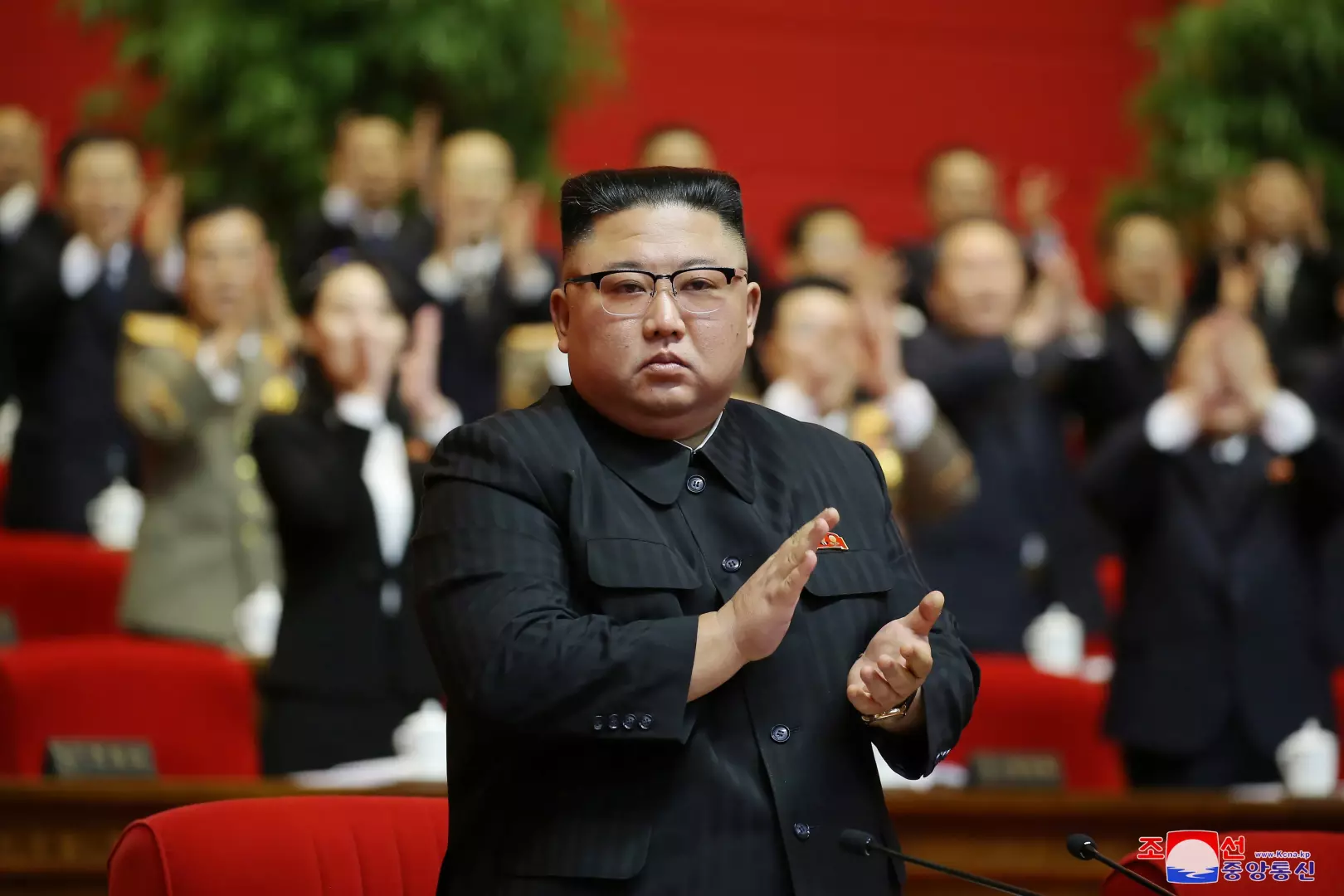
Rise within the Korean Workers’ Party
Kim Jong Un’s political career began to take shape when he was appointed to key positions within the Korean Workers’ Party, including the National Defense Commission and the State Security Department. His rapid rise within the party signaled his growing influence and potential succession to his father’s leadership.
Declaration as Supreme Leader
After the death of his father in December 2011, Kim Jong Un was declared the supreme leader of North Korea. This declaration solidified his position at the helm of the country and marked the beginning of his leadership journey.
Consolidation of Power
Kim Jong Un embarked on a mission to consolidate his power, reshuffling party and military structures to ensure his authority. He dealt with potential challenges to his leadership and implemented measures to strengthen his control over the regime.
Nuclear Program and Unpredictable Foreign Policy
Under Kim Jong Un’s leadership, North Korea’s nuclear program continued to be a top priority. He oversaw the development of nuclear weapons and engaged in unpredictable foreign policy decisions, which often resulted in heightened tensions with the international community.
Human Rights Abuses and International Fallout
Kim Jong Un’s regime has been marred by notorious human rights abuses, leading to widespread condemnation and international sanctions. The section will explore the egregious violations under his leadership and the consequences they have had on North Korea’s standing in the global community.
Relationship with Elites and Succession Planning
Kim Jong Un’s relationship with elites plays a crucial role in maintaining his power and ensuring the regime’s stability. This section will examine his interactions with the political and military elite and the potential succession planning within his family, including the role of his sister, Kim Yo-Jong.
Economic Reforms and Opening to the Outside World
In recent years, Kim Jong Un has made efforts to grow North Korea’s economy and open up to the outside world. This section will delve into the economic reforms implemented by his regime and the challenges and opportunities associated with these endeavors.
Challenges and Future Prospects
The challenges ahead for Kim Jong Un’s leadership are numerous, with potential internal and external factors that could shape the future of North Korea. This section will discuss the prospects for his regime and the key obstacles he may face.
Early Political Career
After completing his education, Kim Jong Un began his political career by joining the Korean Workers’ Party. He quickly rose through the ranks, gaining important positions within the party and the military. His appointment to the National Defense Commission in 2009 marked his first significant role in the North Korean government.
Kim Jong Un’s early political activities focused on consolidating his power and preparing for his eventual succession to the supreme leadership. He worked closely with his father, Kim Jong Il, and other top officials to ensure a smooth transition of power. This included purging potential rivals and strengthening his control over the military and other key institutions.
Overall, Kim Jong Un’s early life and education provided him with the necessary foundation and support to embark on a successful political career in North Korea. His family background, education, and early political activities set the stage for his rise to power and his subsequent leadership of the country.
| Key Events | Date |
|---|---|
| Kim Jong Un born | January 8, 1984 |
| Attends the International School of Berne in Switzerland | 1998-2000 |
| Joins the Korean Workers’ Party | 2007 |
| Appointed to the National Defense Commission | 2009 |
Rise within the Korean Workers’ Party
Kim Jong Un’s political career began to take shape when he was appointed to various positions within the Korean Workers’ Party, paving the way for his eventual succession to leadership. In April 2009, he was appointed to North Korea’s National Defense Commission, signaling his increasing prominence within the party and the military.
By September 2010, Kim Jong Un was promoted to a four-star general and named vice chairman of the Central Military Commission, as well as the Central Committee of the Workers’ Party of Korea. This was the first time that any North Korean news outlet mentioned Kim Jong Un’s name, further solidifying his role as the successor to his father, Kim Jong Il.
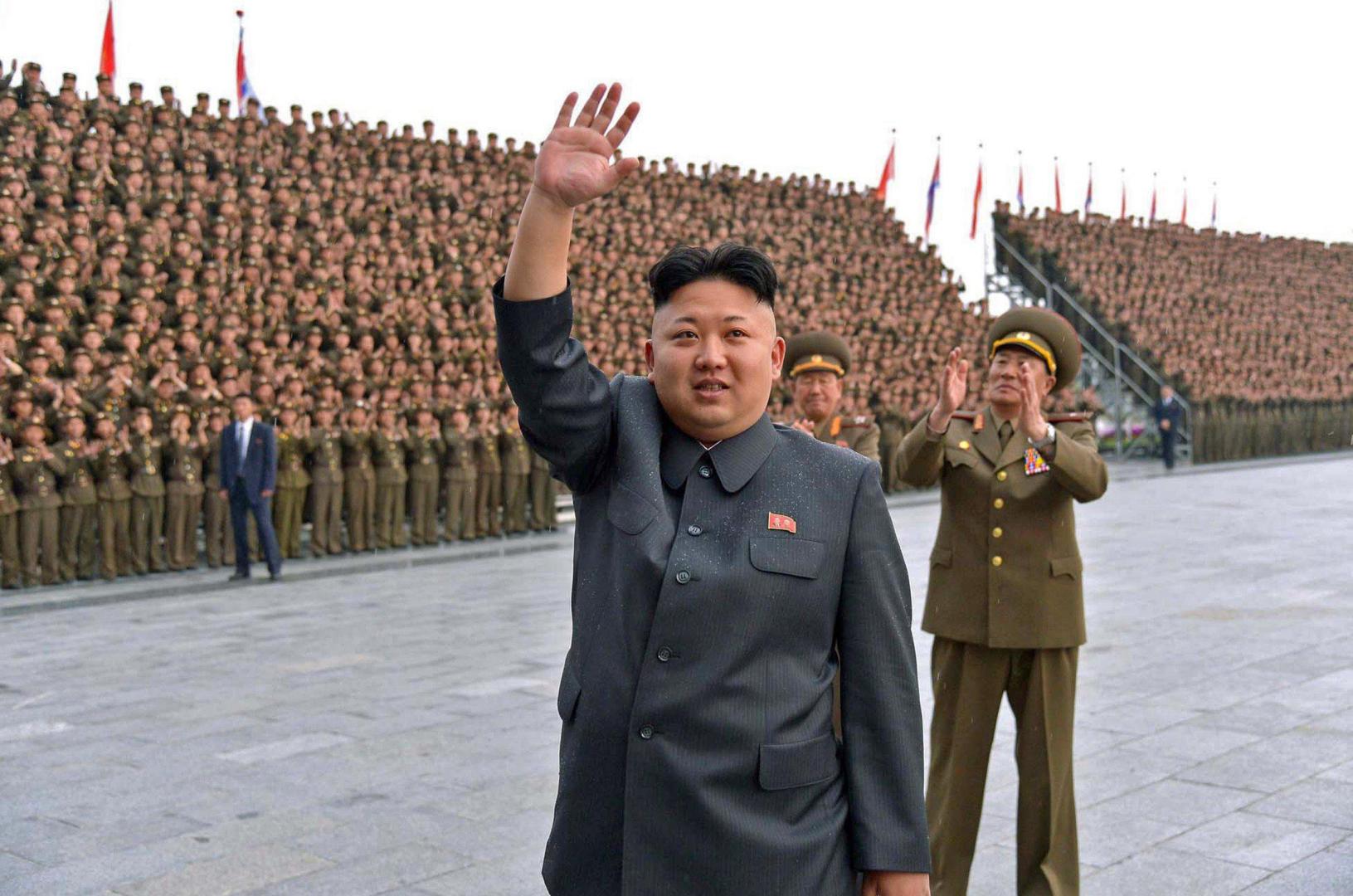
As part of his rise to power, Kim Jong Un oversaw the reinvigoration of the Workers’ Party of Korea as the core political organ. He reclaimed power from elite factions that had been delegated authority in his father’s later years, effectively consolidating his control over the party and the country.
| April 2009 | Kim Jong Un appointed to North Korea’s National Defense Commission |
|---|---|
| September 2010 | Promoted to four-star general and named vice chairman of the Central Military Commission and the Central Committee of the Workers’ Party of Korea |
“Kim Jong Un’s rise within the Korean Workers’ Party marked a significant shift in North Korea’s leadership. His appointments to key positions signaled his increasing prominence and set the stage for his eventual succession as the supreme leader of North Korea.” – North Korea Leadership Expert
Declaration as Supreme Leader
Following the death of his father in December 2011, Kim Jong Un was declared the supreme leader of North Korea, marking a significant transition in the country’s leadership. Kim Jong Un quickly solidified his position by assuming several official titles, including first secretary of the Korean Workers’ Party, chairman of the Central Military Commission, and chairman of the National Defense Commission.
Under Kim Jong Un’s leadership, North Korea continued its nuclear program and pursued an unpredictable foreign policy. The regime conducted multiple nuclear tests and missile launches, drawing international condemnation and increasing tensions with the United States and its allies.
The declaration of Kim Jong Un as the supreme leader also brought attention to the notorious human rights abuses under his regime. North Korea has been widely criticized for its severe repression of political dissent, lack of freedom of speech and media, and its use of forced labor and political prison camps.
In terms of succession planning, Kim Jong Un’s family plays a significant role. His younger sister, Kim Yo Jong, has emerged as a prominent figure within the regime and has been involved in diplomacy, representing North Korea at international events. The potential for a familial succession in the future raises questions about the stability and future direction of North Korea.
| Year | Event |
|---|---|
| 2011 | Kim Jong Un declared supreme leader following the death of his father |
| 2013 | North Korea conducts third nuclear test |
| 2015 | Kim Jong Un’s uncle, Jang Song-thaek, executed for treason |
| 2017 | North Korea tests intercontinental ballistic missiles |
Despite international pressure and sanctions, Kim Jong Un has remained firm in his pursuit of nuclear weapons and maintaining control over the country. The future of North Korea under his leadership remains uncertain, with potential challenges from within and external pressures shaping the country’s trajectory.
Consolidation of Power
With his newfound position as supreme leader, Kim Jong Un embarked on a journey to consolidate his power, making strategic moves to strengthen his authority within the party and the military. One of his early steps was to reshuffle party and military structures, ensuring that loyalists held key positions of influence. This allowed him to weed out any potential threats to his leadership and solidify his control over the country’s political apparatus.
Kim Jong Un also sought to assert his authority through a series of high-profile appointments and promotions. By elevating trusted allies to important positions within the government and the ruling Korean Workers’ Party, he effectively cemented his grip on power and marginalized any potential rivals. This consolidation of power was crucial for Kim to maintain control and ensure the loyalty of the country’s elite.
In addition to reshuffling personnel, Kim Jong Un undertook efforts to further centralize decision-making authority. He concentrated power within the National Defense Commission, an organization that oversaw both military and civilian affairs, effectively giving him control over all aspects of the country’s governance. By consolidating power in this way, Kim Jong Un solidified his position as the supreme leader and established himself as the ultimate decision-maker in North Korea.
Table: Key Appointments and Reshuffling of Structures
| Year | Key Appointments/Reshuffling |
|---|---|
| 2012 | Kim Jong Un appointed as First Secretary of the Korean Workers’ Party, Chairman of the Central Military Commission, and Chairman of the National Defense Commission |
| 2013 | Reshuffling of top military and party positions to consolidate Kim Jong Un’s authority |
| 2016 | Creation of the State Affairs Commission, with Kim Jong Un as its head, replacing the National Defense Commission as the country’s highest governing agency |
| 2017 | Expansion of Kim Jong Un’s powers through constitutional revisions at the Supreme People’s Assembly |
Kim Jong Un’s consolidation of power was not without its challenges. He faced potential threats from within the regime and had to navigate complex relationships with both military and party elites. However, through strategic maneuvering and maintaining a firm grip on the reins of power, he managed to establish himself as the undisputed leader of North Korea.
Nuclear Program and Unpredictable Foreign Policy
Throughout his political career, Kim Jong Un has maintained a firm grip on North Korea’s nuclear program and pursued a foreign policy approach that often defies expectations. Under his leadership, North Korea’s nuclear weapons program has seen significant advancements, with multiple underground nuclear tests and the development of intercontinental ballistic missiles (ICBMs) capable of reaching the mainland United States.
In 2013, North Korea conducted its third nuclear test, followed by subsequent tests in 2016 and 2017. These tests, combined with continued missile launches, heightened tensions in the region and drew international condemnation. The development of nuclear capabilities under Kim’s leadership has been a central focus of his regime, enabling North Korea to strengthen its position geopolitically and potentially use its nuclear weapons as a bargaining chip in negotiations with other countries.
Kim Jong Un’s foreign policy approach has also been characterized by unpredictability. His regime has engaged in saber-rattling and provocative actions, such as missile launches and military exercises, that have intensified regional tensions. This unpredictability has often caught other nations off guard and created challenges for traditional diplomatic channels.
Despite international pressure and economic sanctions, Kim Jong Un has remained steadfast in his pursuit of nuclear weapons and unpredictable foreign policy. These actions have led to increased isolation for North Korea on the world stage and strained relationships with neighboring countries and global superpowers.
| Date | Event |
|---|---|
| 2013 | North Korea conducts third nuclear test |
| 2016 | North Korea conducts fourth and fifth nuclear tests |
| 2017 | North Korea conducts sixth and most powerful nuclear test |
Human Rights Abuses and International Fallout
Kim Jong Un’s leadership journey has been marred by reports of widespread human rights abuses and international backlash against North Korea’s actions. The regime under Kim Jong Un has faced numerous allegations of systematic violations of basic human rights, including arbitrary detention, torture, forced labor, and restrictions on freedom of expression, assembly, and religion.
According to various reports from human rights organizations and defectors, North Korea operates a vast network of political prison camps where individuals are subjected to severe mistreatment and forced labor. The conditions in these camps have been described as deplorable, with reports of starvation, physical abuse, and executions.
In response to these gross human rights abuses, the international community has imposed sanctions on North Korea and condemned its actions. The United Nations has issued multiple resolutions condemning North Korea’s human rights record and calling for accountability. The United States and other countries have also imposed their own sanctions, targeting individuals and entities involved in human rights abuses.
The continued human rights abuses under Kim Jong Un’s regime have led to international isolation and strained North Korea’s diplomatic relations with many countries. The regime’s unpredictable behavior, including its nuclear weapons program and aggressive rhetoric, has further heightened tensions and increased the risk of conflict in the region.
| Date | Event |
|---|---|
| Sep. 15, 2023 | North Korea’s Kim gets a close look at Russian fighter jets as his tour narrows its focus to weapons |
| Sep. 15, 2023 | Putin meets the leader of Belarus, who suggests joining Russia’s move to boost ties with North Korea |
| Sep. 14, 2023 | Kim Jong Un arrives in Russian city of Komsomolsk-on-Amur for expected visit to fighter jet plant |
| Sep. 14, 2023 | North Korea’s Kim arrives in eastern Russian city for expected visit to fighter jet plant |
| Sep. 14, 2023 | With Russia isolated on the world stage, Putin turns to old friend North Korea for help |
The table above highlights some recent news events related to North Korea and its leader Kim Jong Un. These events demonstrate the ongoing engagement and diplomatic relations between North Korea and other countries, despite the international fallout and condemnation of the regime’s human rights abuses.
Key Points:
- Kim Jong Un’s leadership has been marked by reports of widespread human rights abuses.
- North Korea has faced international backlash and sanctions due to its human rights record.
- The regime operates political prison camps where individuals are subjected to severe mistreatment and forced labor.
- The international community has condemned North Korea’s actions and called for accountability.
- Kim Jong Un’s regime’s aggressive behavior and nuclear weapons program have further strained diplomatic relations.
Relationship with Elites and Succession Planning
The relationship between Kim Jong Un and the elites within North Korea plays a crucial role in the stability of his regime and potential succession planning within his family. Kim Jong Un has taken several steps to solidify his position and maintain control over the country. Through reshuffling party and military structures, Kim has strategically placed loyalists in key positions, ensuring their support and allegiance to his leadership.
One notable move was the execution of his uncle, Jang Song-thaek, in 2013. Jang was a high-ranking official within the party and seen as a potential threat to Kim’s rule. His removal sent a clear message to other elites about the consequences of disloyalty. Kim has also retired, demoted, or shuffled out other top officials who were perceived as a challenge to his authority.
In terms of succession planning, Kim Jong Un has three children with his wife, Ri Sol-ju. While the oldest child is rumored to be a son, the gender of the other two children is unknown. Speculation has risen regarding the potential involvement of Kim’s younger sister, Kim Yo-jong, in the succession process. She has emerged as a prominent figure in North Korean politics, accompanying Kim on diplomatic visits and representing the regime on the international stage.
| Members of Kim Jong Un’s Family | Notable Positions |
|---|---|
| Kim Jong Il, Father | Supreme Leader of North Korea |
| Kim Yo-Jong, Sister | Advisor to Kim Jong Un |
While the exact details of succession planning remain unknown, Kim Jong Un has taken steps to consolidate his family’s power. The regime’s survival relies heavily on maintaining support from elites, who hold key positions within the party and military. By cultivating relationships and ensuring loyalty, Kim Jong Un aims to secure a smooth transition of power within his family if necessary.
Economic Reforms and Opening to the Outside World
In recent years, Kim Jong Un has shown a willingness to implement economic reforms and engage with the international community, signaling a potential shift in North Korea’s policies. These changes have been aimed at revitalizing the country’s stagnant economy and reducing its dependency on external aid. Kim Jong Un’s leadership journey has seen several key developments in North Korea’s economic reforms and opening to the outside world.
One notable step was the introduction of a new economic policy known as the “Byungjin Line” in 2013. This policy emphasized the parallel development of the country’s nuclear weapons program and its economy, aiming to achieve both military strength and economic prosperity. Under this policy, Kim Jong Un initiated a series of economic reforms, including the establishment of special economic zones to attract foreign investment, the promotion of entrepreneurship and small-scale private businesses, and the implementation of agricultural reforms to increase food production.
Furthermore, Kim Jong Un has sought to improve relations with neighboring countries and increase North Korea’s participation in international organizations. He has held several summits with regional leaders, such as South Korean President Moon Jae-in and Chinese President Xi Jinping, to discuss economic cooperation and regional security issues. North Korea has also made efforts to enhance trade and diplomatic ties with countries like Russia and Vietnam.
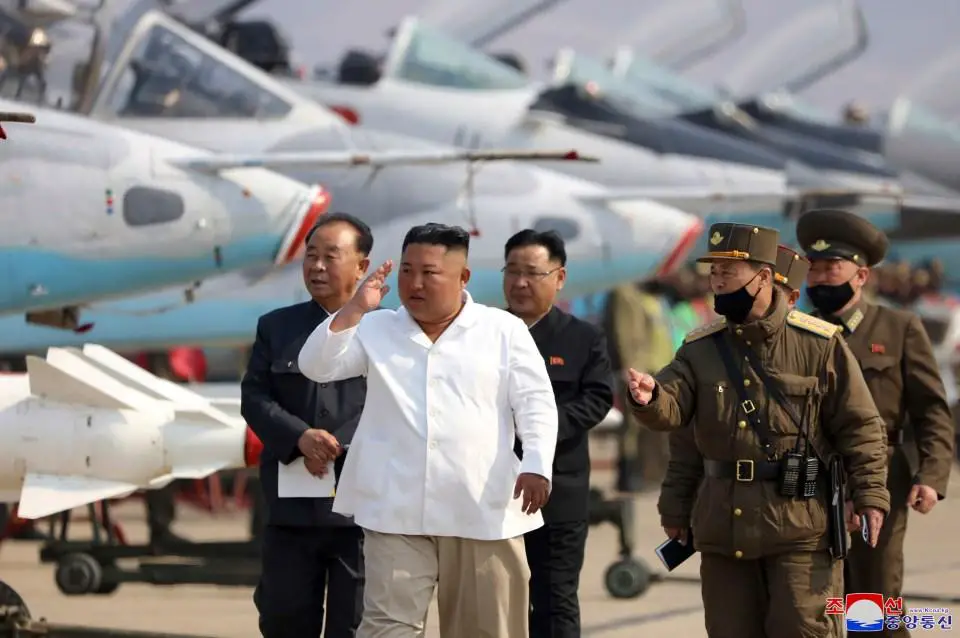
Table: Key Developments in North Korea’s Economic Reforms
| Year | Key Economic Reform |
|---|---|
| 2013 | Introduction of the “Byungjin Line” policy |
| 2015 | Establishment of special economic zones |
| 2017 | Implementation of agricultural reforms |
| 2018 | Summit with South Korean President Moon Jae-in |
| 2019 | Improved trade relations with Russia |
While these economic reforms have shown some progress, challenges remain. North Korea continues to face significant economic sanctions imposed by the international community due to its nuclear weapons program. These sanctions have severely restricted the country’s access to foreign investment, technology, and trade.
Despite these challenges, Kim Jong Un’s economic reforms and opening to the outside world are seen as important steps toward modernizing North Korea’s economy and improving the livelihoods of its people. The future prospects of these efforts, however, depend on various factors, including the success of diplomatic negotiations, the lifting of economic sanctions, and the stability of the regional geopolitical landscape.
Challenges and Future Prospects
As Kim Jong Un continues his political career, he faces numerous challenges and uncertainties that could impact the future trajectory of North Korea and his own leadership. These challenges include:
- Nuclear Program: One of the main challenges for Kim Jong Un is the continued development and oversight of North Korea’s nuclear program. The country’s pursuit of nuclear weapons has drawn international condemnation and resulted in economic sanctions. The success of Kim’s regime will depend on his ability to navigate this issue and potentially negotiate with foreign powers.
- Unpredictable Foreign Policy: Kim Jong Un’s foreign policy decisions have been known for their unpredictability, which has led to a sense of uncertainty and mistrust among other countries. His approach to international relations, particularly with the United States and South Korea, will be a key factor in shaping the future prospects for North Korea.
- Human Rights Abuses: North Korea’s notorious human rights abuses under Kim Jong Un’s regime have garnered international condemnation. The treatment of its citizens, including political prisoners and dissenters, continues to be a major concern. How Kim addresses these human rights issues will impact the country’s relations with the international community.
- Relationship with Elites: Kim Jong Un’s relationship with elites within the North Korean government and military will play a crucial role in his leadership journey. Maintaining their loyalty and support will be essential for the stability of his regime. The potential succession planning within his family, particularly with his sister Kim Yo-Jong, adds another layer of complexity to this dynamic.
- Economic Reforms and Opening to the Outside World: Kim Jong Un has shown some willingness to pursue economic reforms and open up North Korea to the outside world. However, these efforts face numerous challenges, including sanctions, a lack of infrastructure, and a deeply entrenched centralized economy. The success of Kim’s economic reforms will determine the country’s future prosperity and stability.
In summary, Kim Jong Un’s political career is marked by significant challenges and uncertainties. The successful navigation of these challenges, including nuclear weapons, foreign policy, human rights abuses, relationships with elites, and economic reforms, will shape the future prospects of North Korea under his leadership.
Conclusion
The detailed timeline of Kim Jong Un’s political career paints a nuanced picture of his rise to power and the significant events that shaped his journey to becoming the supreme leader of North Korea. Born on January 8, 1984, Kim Jong Un was the youngest son of Kim Jong Il. After his father’s death in December 2011, Kim Jong Un was declared the supreme leader of North Korea and quickly consolidated his power within the Korean Workers’ Party. He continued to oversee North Korea’s nuclear program and pursued an unpredictable foreign policy, often leading to international condemnation and sanctions.
Kim Jong Un’s regime has been marked by notorious human rights abuses, including political purges, forced labor camps, and limited freedom of expression. These abuses have resulted in significant international fallout and increased tensions with other countries. Despite these challenges, Kim Jong Un has maintained a close relationship with elites and implemented succession planning within his family, with his sister Kim Yo-Jong emerging as a potential successor.
In recent years, Kim Jong Un has shown an interest in economic reforms and opening up North Korea’s economy to the outside world. However, these endeavors have been met with mixed results, as the country still faces significant economic challenges and struggles to attract foreign investment.
Looking ahead, the future prospects for Kim Jong Un’s leadership are uncertain. Internal and external factors, such as economic stability, international relations, and potential power struggles within North Korea, will shape the future of the country. It remains to be seen how Kim Jong Un’s leadership will evolve and how it will impact the people of North Korea and the global community.
FAQ
Q: How did Kim Jong Un become the supreme leader of North Korea?
A: Kim Jong Un became the supreme leader of North Korea after the death of his father, Kim Jong Il, in 2011. He was declared the country’s leader and assumed various official titles, solidifying his position within the Korean Workers’ Party and the government.
Q: What is Kim Jong Un’s background and education?
A: Kim Jong Un’s background includes being the youngest son of Kim Jong Il and a member of the Kim dynasty. He was reportedly educated in Switzerland and later studied at the Kim Il-Sung National War College in Pyongyang, North Korea.
Q: How did Kim Jong Un rise to power within the Korean Workers’ Party?
A: Kim Jong Un’s rise to power within the Korean Workers’ Party involved his appointment to key positions, such as the National Defense Commission and the State Security Department. He also received high military ranks, despite his lack of prior military experience.
Q: When was Kim Jong Un declared the supreme leader of North Korea?
A: Kim Jong Un was declared the supreme leader of North Korea in December 2011, following the death of his father. In April 2012, his status was further validated by acquiring several official titles, including first secretary of the Korean Workers’ Party and chairman of the Central Military Commission.
Q: How did Kim Jong Un consolidate his power as the supreme leader?
A: Kim Jong Un consolidated his power by reshuffling party and military structures, installing his own top personnel, and reclaiming power from elite factions. He also conducted purges and executed individuals who were seen as potential threats to his leadership.
Q: What is Kim Jong Un’s approach to North Korea’s nuclear program and foreign policy?
A: Kim Jong Un has continued to oversee North Korea’s nuclear program and has accelerated the country’s development of nuclear weapons and long-range missiles. His foreign policy approach is often unpredictable and has resulted in tensions with other countries, particularly the United States.
Q: What are the human rights abuses under Kim Jong Un’s regime?
A: Kim Jong Un’s regime has been accused of numerous human rights abuses, including political repression, forced labor camps, torture, and restrictions on freedoms of expression, assembly, and religion. These abuses have resulted in international condemnation and the imposition of sanctions on North Korea.
Q: What is the relationship between Kim Jong Un and elites, and is there succession planning in place?
A: Kim Jong Un maintains a close relationship with elites through patronage and control over key positions within the party and the government. There are speculation and ongoing discussions about succession planning within his family, particularly the potential role of his sister, Kim Yo-Jong, in the future leadership of North Korea.
Q: What are Kim Jong Un’s efforts to grow North Korea’s economy and open up to the outside world?
A: Kim Jong Un has initiated economic reforms and has sought to attract foreign investment and develop special economic zones in an effort to grow North Korea’s economy. He has also engaged in international diplomacy, including summits with world leaders, to improve relations and explore opportunities for cooperation.
Q: What are the challenges and future prospects for Kim Jong Un’s leadership?
A: The challenges for Kim Jong Un’s leadership include managing internal factions, economic development, and the potential for external pressures and conflicts. The future prospects will depend on various factors, including how successfully he can navigate these challenges and the willingness of the international community to engage with North Korea.
Q: What is the timeline of events that led to Kim Jong Un’s position as the supreme leader of North Korea?
A: The timeline of events includes Kim Jong Un’s rise within the Korean Workers’ Party, his declaration as the supreme leader after his father’s death, the consolidation of his power, the development of North Korea’s nuclear program, and his foreign policy decisions. These events have shaped his political career and leadership journey.
Source Links
- https://www.britannica.com/biography/Kim-Jong-Eun
- http://www.dukeeastasianexus.com/feng-kim-jong-un-a-timeline.html
- https://www.cfr.org/backgrounder/north-koreas-power-structure

